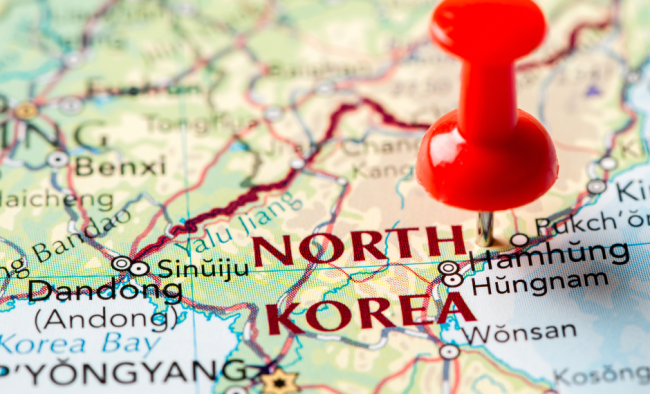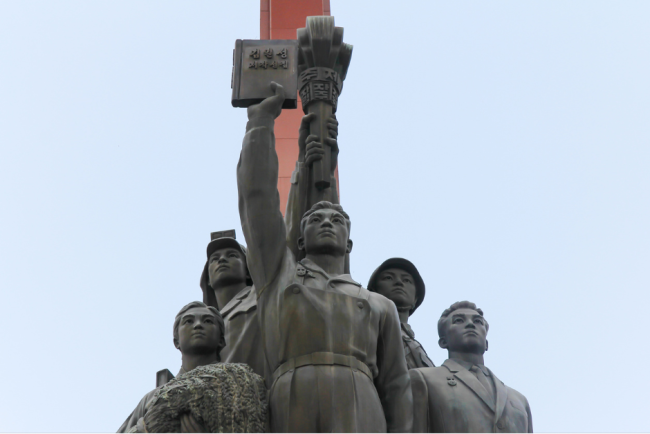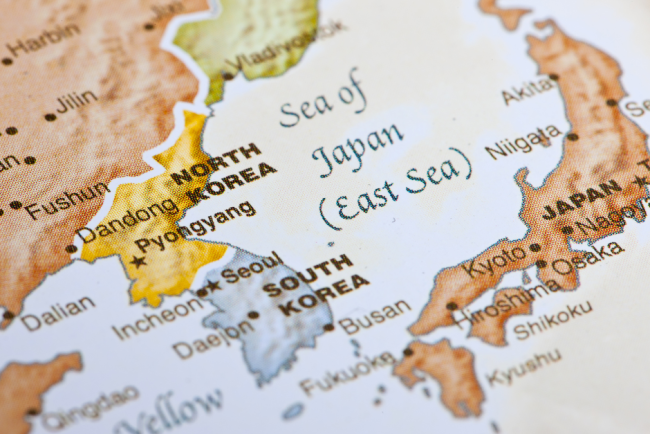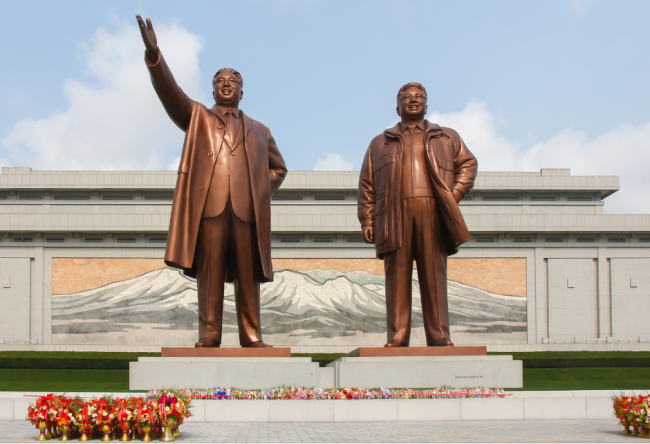Why North Korea is The Hardest Country To Escape?
In the aftermath of World War II, the Korean Peninsula, which had been under Japanese rule since 1910, was divided along the 38th parallel. The North came under Soviet influence, while the South was supported by the United States. Over time, what was intended as a temporary split solidified into two distinct nations: North Korea and South Korea. So, is that why North Korea is the hardest country to escape?

Well, North Korea is a country that often feels shrouded in mystery to the outside world. The government keeps a tight grip on information, and for many North Koreans, their perspective of the world is shaped by what the state allows them to see and hear.
11 Reasons Why North Korea is The Hardest Country to Escape
Imagine living in a place where you’d need permission not just to leave the country, but even to visit the next town over. That’s life for many in North Korea.
Now, let’s delve into the many reasons why North Korea is the hardest country to escape!
1. Why do people want to leave the country?
Under the leadership of the Kim family dynasty, North Korea has become one of the most isolated countries on the planet. The government’s influence is deeply felt in the everyday lives of its people. But while the city lights of Pyongyang might tell one story, life in the rural areas often paints a different picture, where the basics like food can be hard to come by.
Despite the challenges, the spirit of the North Korean people is resilient. Some are driven by the dream of a different life, whether it’s the pursuit of basic human rights, food, freedom, or simply a brighter future for their kids. And so, they take unimaginable risks, seeking ways to leave their homeland behind.
2. The visible barrier – geography
Alright, let’s take a little virtual tour of North Korea’s geography, shall we? When you look at a map, the first thing you might notice is how it’s snugly nestled between some pretty big neighbors: China to the northwest and Russia to the northeast. Then, of course, there’s its sibling, South Korea, to the south. Oh, and we can’t forget those vast stretches of coastline with the Sea of Japan to the east and the Yellow Sea to the west.
Now, you’d think with all this coastline, it might be easy for someone to just hop on a boat and sail away, right? Well, not quite. The seas can be treacherous, and the North Korean navy keeps a watchful eye. So, those tempting waters? They’re more like deceptive barriers than easy escape routes.
Speaking of barriers, the land itself doesn’t do anyone any favors either. Picture this: rugged mountains, covering almost 80% of the country, with dense forests that feel like they’ve sprung right out of a fairy tale. Beautiful? Absolutely. Easy to navigate? Not so much. These mountains and forests, while majestic, can also be a maze for someone trying to find a way out.
And then we have the rivers. The Yalu River to the west, creating a natural divider between China and North Korea, and the Tumen River up north, hugging parts of both China and Russia. Now, rivers might sound like good escape points, but remember: crossing them isn’t a simple swim. There are guards patrolling and, even if you manage to get across, there’s no guarantee of safety on the other side. China, for instance, hasn’t always been the friendliest place for North Korean defectors.
So, while North Korea’s geography might look captivating on a map or in pictures, it’s a whole different story when it becomes a maze you’re trying to navigate out of.
3. The invisible wall – family ties
Ever heard of ‘songbun’? No, it’s not a melody or a tune. In North Korea, it’s kinda like your family’s report card. It measures how loyal your family is to the regime. Your songbun score can make or break your life there. It decides where you can work, if you can go to school, or even if you’ll be invited to the neighborhood’s party!

Now, let’s say you muster the courage and manage to escape. Fantastic for you, but what about your family left behind? Their songbun might take a nosedive. We’re talking about serious consequences here. From getting kicked out of the Workers’ Party to, worst-case scenario, ending up in a labor camp.
Take Thae Yong Ho, for instance. He was a big shot, the North Korean deputy ambassador to the UK. He managed to defect in 2016, but guess what? The poor guy is constantly worried about his siblings back home. He once said, “Even though I am free in South Korea, I can’t shake off the nightmare of what might be happening to my family.”
So, while escaping might seem like the ticket to freedom, for many North Koreans, that decision is weighed down by the heart-wrenching thought of what their families might endure.
4. The DMZ
The DMZ, or the Demilitarized Zone, is about 148 miles long, and here’s the kicker – it’s just 2.4 miles wide. A seemingly small buffer separating two worlds, but oh boy, does it carry a weighty history.

Positioned around the 38th parallel, this area witnessed the heaviest battles during the Korean War. And when the dust settled in 1953, what was the outcome? Not a peace treaty or an armistice. That means, believe it or not, both Koreas are still technically at war. The DMZ serves as a buffer, a ceasefire zone ensuring that the two remain at a tense standstill. But that’s a funny name because the area is armed to the teeth on both ends.
Now, you’d think such a place would be off-limits to tourists, right? Well, surprise! It’s a must-visit spot if you’re in South Korea. Just about 35 miles from Seoul, the DMZ is the 10th best thing to see, according to U.S. News and World Report.
Wanna cross the DMZ? Well, for most, that’s a dream. But tourists do get a kick standing in the Joint Security Area, literally having a foot in both North and South.
But if you’re thinking of entering North Korea through the DMZ, scratch that idea. Most tourists take a detour via China or Russia. Notable exception? President Donald Trump in 2019. He didn’t just cross the DMZ, but he went right into North Korea, shaking hands with its leader, Kim Jong Un. A surprising rendezvous to many, including Kim himself. However, the DMZ isn’t just a symbolic line or a tourist attraction. For some, it’s an escape route, but a very dangerous one, almost impenetrable. With a few exceptions.
What happened to those who escaped through the DMZ
In 2017, a brave North Korean soldier just decided to make a break for it right across there. But you’ve got to wonder, how on earth does anyone sneak through one of the world’s most guarded areas without being caught?
So, here’s what went down: This soldier, in his audacious escape, was spotted and got a full-on hail of bullets from his own side. Imagine this: 40 shots ringing out, and five of them finding their mark. But, this guy? He’s made of tough stuff. He made it to the South.
Now, here’s where things get even more intriguing. This area, called the Joint Security Area or JSA, in the quaint village of Panmunjom, is unique. Here, soldiers from the North and South stand almost elbow-to-elbow. Can you picture it? And our escapee was just a low-ranking soldier, as reported by South Korea’s Yonhap news.
But wait, there’s more to the story. Six months before this incident, another soldier from the North strolled up to a South Korean post and said, ‘Hey, I’m done, take me in.’ Then there were others in September 2016 and June 2015.
And if bullets weren’t enough, the DMZ is also believed to contain over a million landmines. These remnants of the Korean War make this strip not only politically volatile but physically dangerous. Even as the world has advanced technologically, these relics of war remain buried, representing the unresolved tension between the North and the South.
It’s a unique place where old dangers like landmines mingle with the modern might of two of the world’s most sizable armies. The DMZ is a chilling reminder of a conflict frozen in time.
5. China doesn’t help
Despite its closed nature, North Korea shares a historic bond with its neighbor, China. In the 1960s, desperation and hunger drove many from China into North Korea, only for the tide to reverse in the 1990s. The pendulum of migration was always powered by the same force: the relentless gnaw of hunger.
If we look at a map, you will notice a jagged line that forms the northern boundaries of North Korea. It’s quite an interesting stretch of land that spans roughly 1,400 kilometers, with two significant rivers: the Yalu and the Tumen. They carve their way through mountains, forests and lesser-populated areas, creating a sort of natural border between the two nations.
During the winter, the rivers often freeze over, allowing people to literally walk across, and during the summer months, they recede so you can just make your way through to the other side.
But you can’t really just do that because crossing is illegal. And even if you do make it to China, escaping the watchful eyes of guards instructed to shoot on sight, you’ll still find yourself in hostile territory.
You’d think that given the shared socialist ideologies of the two countries, China would be a haven for North Korean defectors. But it’s not that straightforward. China has extradition policies in place with North Korea. This means that those who manage to cross the border and are caught in China are often sent back. The reasons behind this are multifaceted, rooted in both historical ties and current geopolitical strategies.
Given the dire consequences North Koreans face upon their forced return – ranging from severe punishment and imprisonment to, in extreme cases, execution – many defectors aim to move further inland. Their goal? To reach a country that might offer them asylum or a safe path to South Korea.
6. Russia is no different
North Korea doesn’t just share a border with China. It also has a tiny slice of land that borders Russia.
So, if you glance again at the map, to the northeast of North Korea, you’ll notice a tiny stretch of border that it shares with Russia. It’s only about 17 kilometers long. This border meets at a point called the Tumen River, the very same river that delineates much of North Korea’s boundary with China.
Making it to Russia as a way to escape North Korea is also illegal and kinda’ ironic. You see, there’s a bridge called the “Friendship Bridge” that spans the Tumen, connecting the two countries. But the North Koreans arriving in Russia don’t receive much friendship.
Though it might sound grand, the Friendship Bridge is quite a modest structure, but its importance is undeniable, serving as a connection to the Trans-Siberian Railway, which is a significant trade route. This connection provides North Korea with a link to broader international markets, especially at times when sanctions or strained relations limit its interactions with other nations.
When it comes to defectors, this stretch isn’t a favorite, mainly because of its short length and the close watch kept by both Russian and North Korean guards. Russia, like China, has an extradition agreement with North Korea. This means that North Korean defectors caught in Russia are at risk of being returned, facing grim consequences back home.
Interestingly, despite the complexities of international politics, Russia and North Korea maintain a somewhat friendly relationship. They’ve been historical allies since the days of the Soviet Union, and while the dynamics have shifted over the decades, there’s a certain level of understanding that persists.
7. Crossing the border can be very expensive
Since 1953, about 31,000 North Koreans have defected into the South. Almost 71% of them are women, most in their 20s and 30s. Very few dare to cross the heavily guarded DMZ. Most choose to go through the North, through China, trekking down to Vietnam, Laos, and finally reaching Thailand, from where they’re flown into South Korea. Some even head to the US.
According to Um Yae-run, a 41-year-old defector from North Korea, cited by Al Jazeera, the escape journey was harsh and very expensive. She escaped North Korea with the help of her aunt and a broker. Her aunt was living in the border region with China and had managed to make it out of North Korea first. Then, when she arrived in South Korea, she sought a broker to contact Yae-run, urging her to leave her life behind for a brighter future. But it wasn’t an easy decision. Yae-run faced the agonizing choice of leaving behind her daughter and mother.
However, when she finally made her decision, she entrusted her fate to a broker who helped her reach the Yalu River and cross over. To her surprise, the broker made her cross the river in broad daylight and just told her to run across the frozen river. Police patrols shot at her, but, as instructed by the broker, she ran in a zig-zag pattern that helped her evade the bullets.
However, the escape from North Korea was just the beginning. What followed was a complex, broker-led relay across multiple countries. From the heart of China to the bustling streets of Hanoi, then sneaking through the shadowy trails of Cambodia, Yae-run, along with other defectors, moved discreetly, avoiding any unwanted attention.
Brokers help people flee for a hefty price
The role of brokers in these escapes can’t be understated. They are basically smugglers who ensure safe passage, evading officials, and sometimes even bribing guards. But this intricate assistance comes at a steep price. When Yae-run fled, her escape cost about $2,800. Later, when she sought the same help for her daughter, the price had soared to $6,000. Later on, in 2018, a defector might spend as much as $14,000, with the actual border crossing being the priciest part of the journey.
But now things are even more pricier. After the COVID, the lockdowns and border security were harsher than ever, making the escape even more dangerous and more expensive. You see, brokers who once operated in the shadows now risked a lot more than before. Their fees shot up to account for these risks. Hong Gang-chul, a former insider and ex-border guard, spilled the beans to Voice of America about the industry’s “price hike”. In the past, when a defector from North Korea sent money back home to his relatives, which, by the way, it’s also deemed illegal by the state, brokers pocketed around 30%. But today? Some are snatching up to 70%!
And if you’re curious about the current price tag on freedom? According to Hong, by 2021, that journey to South Korea would set you back a whopping $21,000. This is huge considering an average North Korean earns about $5-$12 a day.
8. The state controls everything
The numbers of North Korean defectors reaching South Korea peaked in 2009 at about 3,000 souls. By 2020, the number dropped to 229, then 63 the next year. How so?

In North Korea, the laws are getting worse and worse. It isn’t just the big brother watching, it’s the entire neighborhood. They are called “inminban” and you can think of them as community leaders who spy on everyone. Every little detail is important, from your shopping habits to your bedtime reading. Why does the government care what you read? Well, any foreign book, including the Bible or other religious books, any foreign piece of videos, movies, songs, magazines, anything you can think of – they are highly forbidden in North Korea.
Access to internet is controlled
North Koreans don’t have access to the internet as we know it. They can’t use Facebook, Instagram, YouTube or whatever. They use Kwangmyong, which is a state-controlled intranet service they can browse as you’d browse the internet, but only get results that are accepted by the state. In short, the state makes sure they control what you believe and what you know about the world outside.
Smartphones? North Korea has a love-hate relationship with them. In 2008, Telecom giant Orascom, partnered with the North Korean government to launch a 3G mobile service named Koryolink. Fun fact: Leaked info hints that Huawei might’ve broken some U.S. rules in helping to set up this network.
Fast forward to today, Koryolink is still rocking that 3G. Huawei might’ve stopped their network support in 2016, but it’s still functioning. For most North Koreans, their digital world is limited to the country’s intranet. But if you’re a foreigner living there long-term or just visiting, you might get a taste of the internet. And a tip if you’re thinking of visiting: Want Koryolink on your phone? That’ll be $285 for a SIM card and another $23 for 50MB of data.
You cannot buy iPhones in North Korea
Moreover, it might seem that the North Korean government allows only for a few smartphones to be sold and used in the country. Some of them include the Phurunhanul H1, or Jindallae. They are claimed to be produced locally, but they are usually copies of Samsung phones or other well-known devices from the outside world. Voices say that the phones come with pre-installed monitoring apps that allow the state to track your activity at all times. They cannot make phone calls outside of North Korea and also, storing information on SD cards is forbidden.
And since we’ve arrived at SD cards, we should also point out that there used to be common practice for smugglers and brokers to sneak forbidden video materials into North Korea via SD cards.
Speaking of making outside phone calls, North Koreans cannot even talk to their relatives outside the country. Their relatives cannot send them money in any way other than through brokers, who might retain 70% of the money as fee. That’s crazy!
North Korea doesn’t like voices other than its own as well. All media is state-controlled. In 2020, a new law criminalized watching media from South Korea, the US or Japan, with penalties as severe as death. Even using certain words or dressing a particular way could get you in big trouble.
9. You have to show loyalty to your government
Forced labor is a common practice in North Korea. The state categorizes its people using a system called songbun, which tags people as “loyal”, “wavering” or “hostile” towards the state. This tag decides a lot about your life – where you work, live or study. While some manage to bribe their way around, it’s a tough life, especially for women and girls who face additional abuse and discrimination.
10. The COVID19 pandemic sealed the borders
With the onset of the COVID-19 pandemic in 2020, North Korea swiftly sealed its borders. While it might seem like a genuine attempt to shield its population and already stretched healthcare system from the virus, the move doubled as an excuse to clamp down harder on illicit border crossings and internal travel. This new level of control added to the brutal security measures Kim Jong-un had been implementing since taking the reins. The goal was to make escape even riskier with added barriers and a beefed-up surveillance system.
Many argue that, while the country’s tight lockdown might be in part due to health concerns, it has certainly been intensified for political reasons. The already challenging journey for defectors, once dotted with moments of respite like frozen rivers devoid of guards, has now become a relentless gauntlet of reinforced fences, looming watchtowers, and frequent patrols. Moreover, this heightened security hasn’t just deterred potential defectors but has also choked the lifeline of the country’s black market. The covert flow of essentials like food, medicine, and foreign media has dwindled, adding another layer of hardship to the lives of North Koreans.
11. The punishment is also death
North Korean law states that leaving the country without permission is a crime of treachery against the nation and can be punishable by death.
Crazy, right? It’s like they’re trying super hard to keep everyone in the dark about the outside world. If you get caught trying to leave and somehow dodge the death sentence, you’re still in for a rough time. Think terrible prison conditions, forced work, and sometimes even torture. And it’s not just the person trying to escape; their family can get in trouble too. It’s a way for the government to scare others into staying put. So, if someone decides to risk it all and leave, you know they’re really desperate for a new start.
